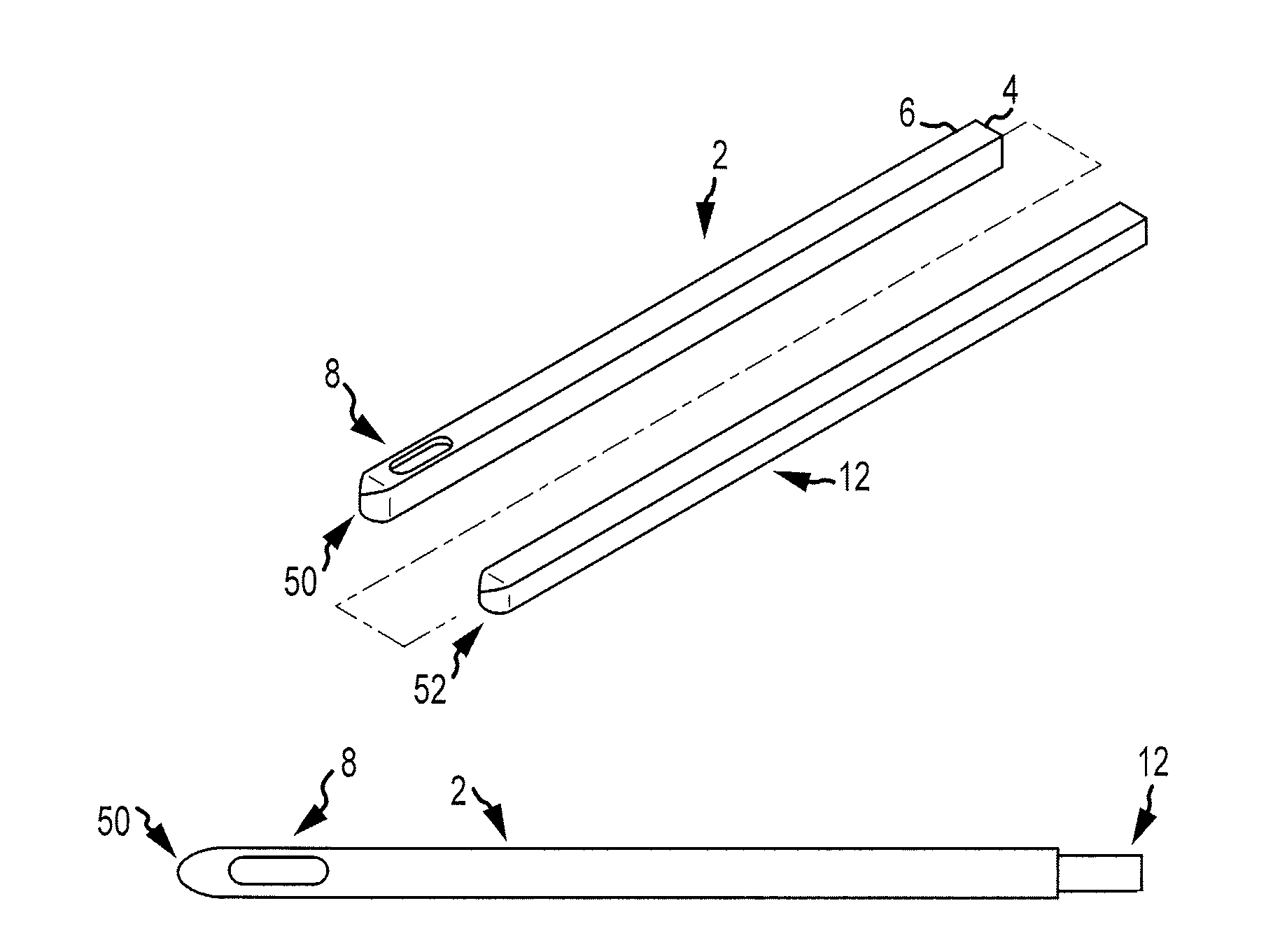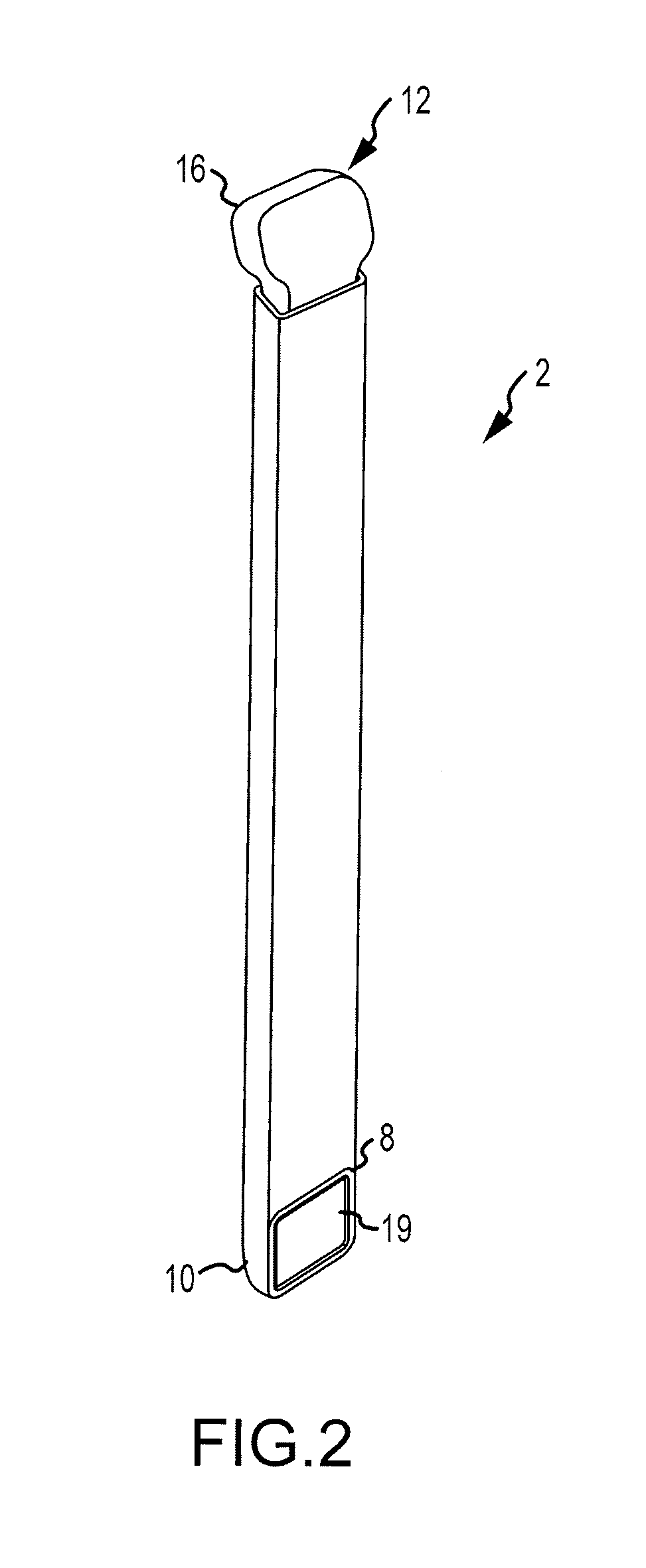Bone graft delivery device and method of using the same
a bone graft and delivery device technology, applied in the field of orthopedic surgery, can solve the problems of long hospitalization time, long procedure time, complex use of implements, etc., and achieve the effects of preventing or mitigating the risk of injury, facilitating implantation sites, and reducing the risk of infection
- Summary
- Abstract
- Description
- Claims
- Application Information
AI Technical Summary
Benefits of technology
Problems solved by technology
Method used
Image
Examples
Embodiment Construction
[0057]The present invention relates to a device and method for delivery of bone graft material to any portion of a patient which requires bone graft material. Thus, for example, the foregoing description of the various embodiments contemplates delivery to, for example, a window cut in a bone, where access to such window for bone grafting is difficult to obtain because of orientation of such window, presence of muscle tissue, risk of injury or infection, etc. The bone graft delivery device is formed such that the one or more hollow tubes and / or plungers may be helpful in selectively and controllably placing bone graft material in or adjacent to such window. The bone graft delivery device is formed to allow delivery of bone graft material in a direction other than solely along the longitudinal axis of the device, and in some embodiments transverse to the primary axis used by the surgeon or operator of the device when inserting the device into a cannula or other conduit to access the s...
PUM
 Login to View More
Login to View More Abstract
Description
Claims
Application Information
 Login to View More
Login to View More - R&D
- Intellectual Property
- Life Sciences
- Materials
- Tech Scout
- Unparalleled Data Quality
- Higher Quality Content
- 60% Fewer Hallucinations
Browse by: Latest US Patents, China's latest patents, Technical Efficacy Thesaurus, Application Domain, Technology Topic, Popular Technical Reports.
© 2025 PatSnap. All rights reserved.Legal|Privacy policy|Modern Slavery Act Transparency Statement|Sitemap|About US| Contact US: help@patsnap.com



